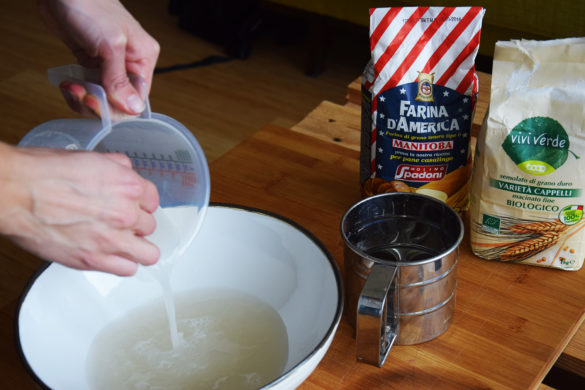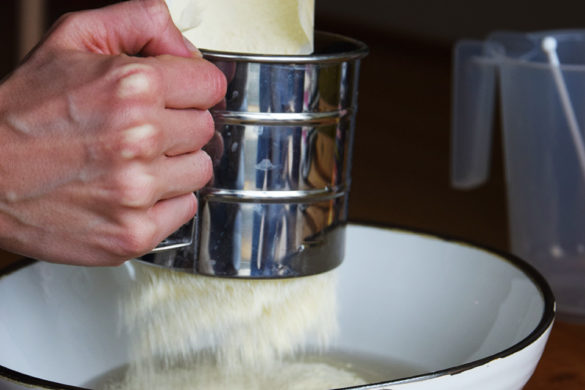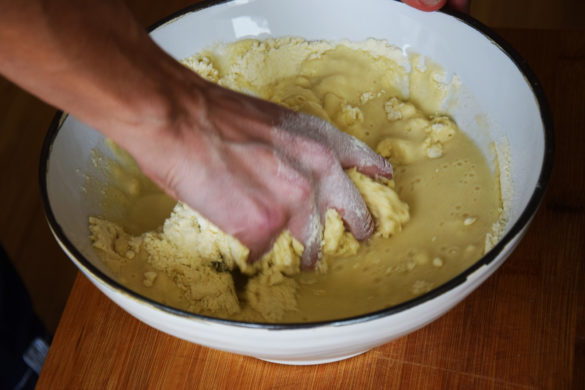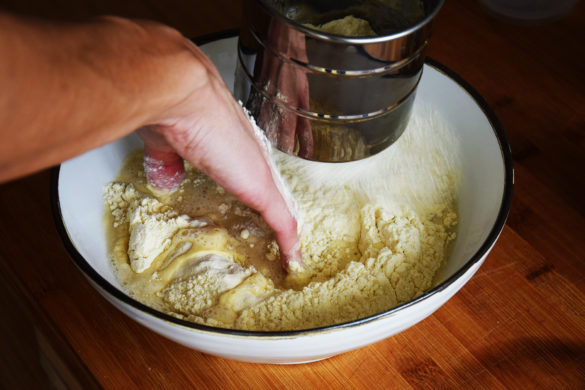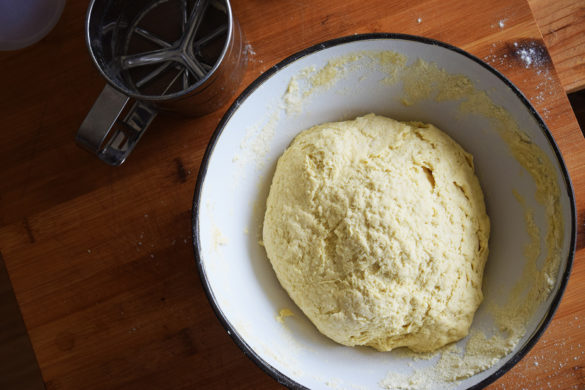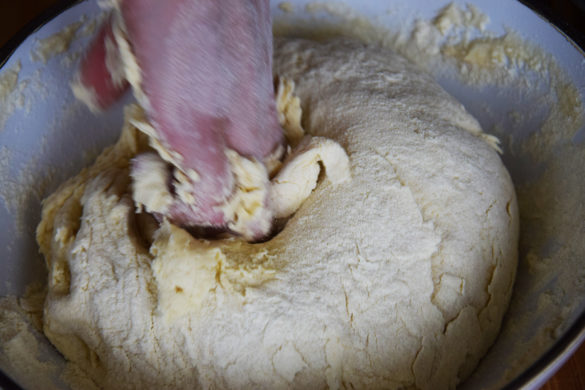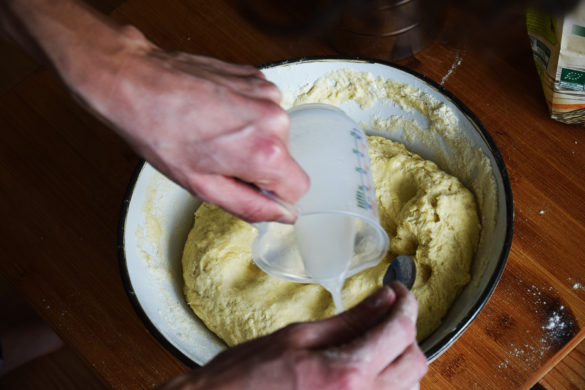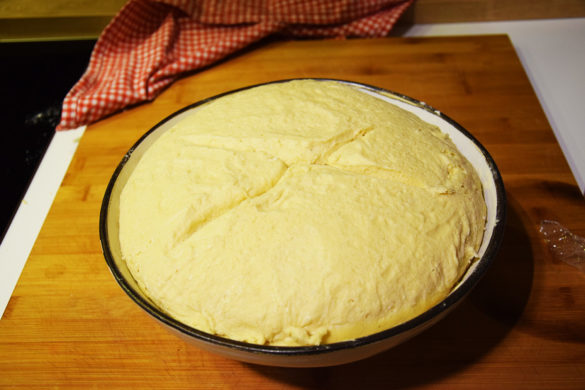The Roots of semolina bread
Wikipedia defines ‘semolina’ as the coarse, purified wheat middlings of durum wheat mainly used in making pasta and couscous. Semolina is derived from the Italian word semola, meaning ‘bran’. This is derived from the ancient Latin simila, meaning ‘flour’, itself a borrowing from Greek σεμίδαλις (semidalis), “groats”.
For me ‘semolina’ has a much deeper meaning that I directly connect to my roots. Altamura (a small city in southern Italy, located on one of the hills of Murge plateau) is the queen of the Apulian bread, where an ancient and tasty bread called “Alta Murgia Traditional Bread” is still produced and now protected by the Slow Food Foundation. This bread preserves the original recipe with the raw materials of the territory. It is cooked in the wood/stone ovens, typical of my region (Apulia, Italy).
How to prepare the bread
You probably already know that I love to make and bake the bread myself. It’s healthier than any other bread you can buy at the bakery or at the supermarket. Believe me. And the baking smell it ‘s the cherry on the cake!
I use to bake different types of bread: with or without seeds, with normal flour or semolina. Today I will show you few simple steps that you can apply for almost all the type of flour, you then just need to accurately dose the amount of water that a certain flour might absorb.
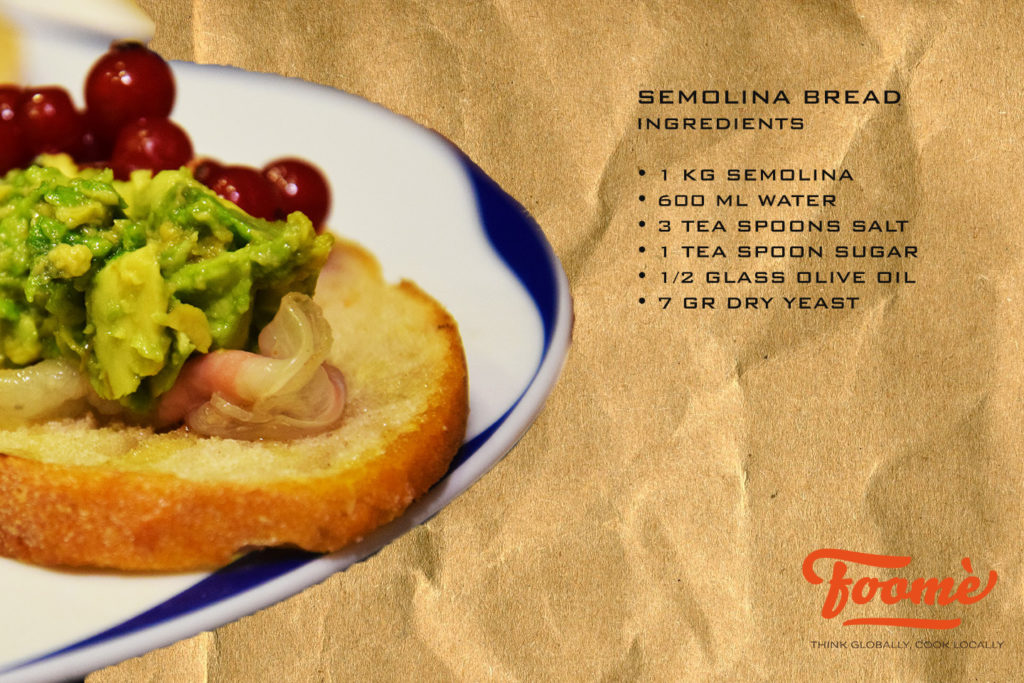
Melt the yeast in the water (room temperature). Put the mixed water&yeast into a big bowl. Slowly add 3/4 of semolina, olive oil, and sugar. Now start mixing and gradually add the rest of the semolina and let the dough come together. Knead for 8 minutes with your hand. You are aiming for moderate gluten development at this stage. Add the salt and continue mixing for another couple of minutes. Then transfer the dough to a floured wooden/stone work surface and do two stretch and folds. Keep working it for another 10 minutes using both your hands. Watch our ‘semolina bread’ movies to observe this technique if you are not familiar with it.
Transfer the dough to the bowl, cover and leave to rest for 4 to 6 hours.
Preheat your oven to 235 ºC or higher if your oven allows it to.
Now it’s time to shape. It’s something for which everybody develops his or her own favorite technique over time. You can make a batard or loaf shape or a boule (ball).
Bake it for about 40 to 45 minutes and your bread is ready!
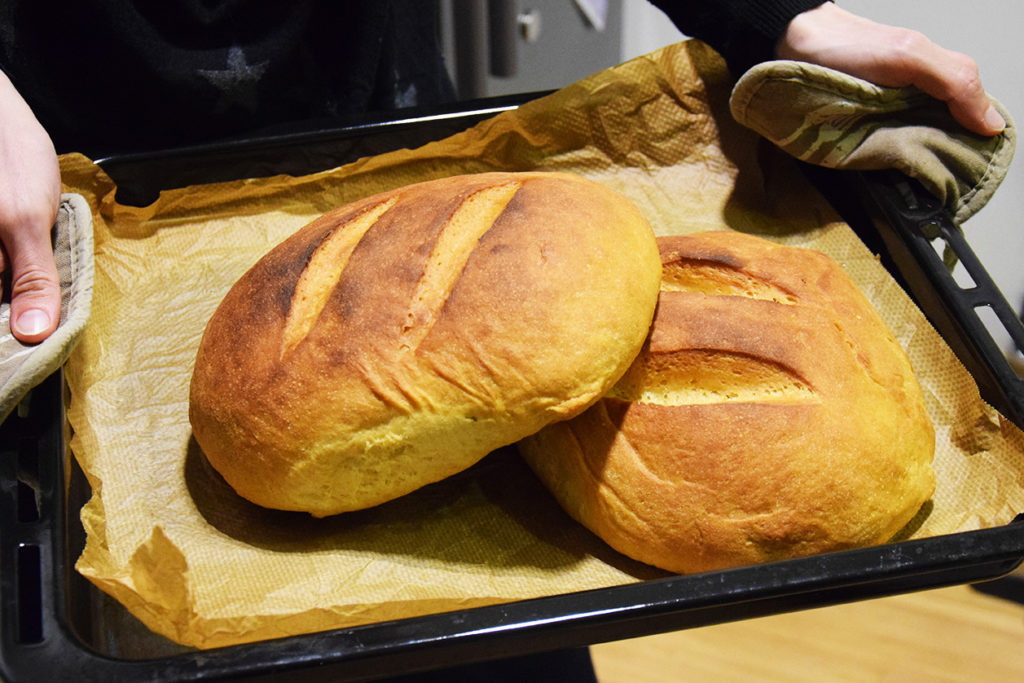
The characteristics of this bread
The local bread is characterized by the typical shape and for the golden crust and for the high aromaticity characterized by intense toasted notes. On the palate, the consistency is soluble and pasty when it is fresh, more compact but always highly chewable when a few days have passed from production. The taste is delicious.
One of the things I like the most about it is that you can save it for days (almost a week) closed in a dry kitchen towel. You can slice it after days, toast it and create one of the most amazing bruschetta you have ever eaten.
Basically, you can prepare bruschetta with all the ingredients available in your house. Starting from basics: olive oil, salt, and oregano (typical of Mediterranean countries) to tomatoes, tuna fish, red onions, etc. Finishing with even more exotics and original combinations.
The featured photo shows one of the bruschetta I have prepared with grilled lardo, smashed avocado, and red berries.



